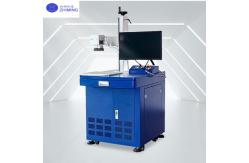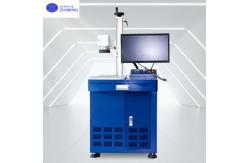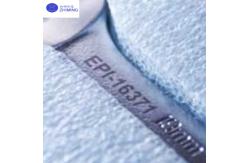Smart Fiber Laser Marking System Serial Codes Logos Traceability
|
|
Introduction to Fiber Laser Marking Machine
A fiber laser marking machine is a cutting-edge, non-contact marking system designed for precision engraving, etching, and labeling on a wide variety of materials, particularly metals and engineered plastics. It uses a high-powered laser beam generated through fiber-optic amplification technology, allowing for fine, permanent, and high-speed markings without the need for consumables or frequent maintenance. This machine operates using a fiber laser source doped with rare earth elements such as ytterbium, producing a laser wavelength of around 1064nm. This wavelength is particularly well-suited for marking metallic surfaces and hard plastics, delivering excellent absorption and high contrast results. The focused laser beam, controlled by galvanometric scanning heads, rapidly etches text, logos, barcodes, serial numbers, and complex graphics with micrometer-level accuracy. Fiber laser marking systems are known for their long service life—up to 100,000 hours—along with their energy efficiency and resistance to environmental factors. The non-contact nature of the process ensures that the material remains undamaged, even when marking fragile or thin items. Due to their versatility and reliability, fiber laser marking machines are widely used in industries such as automotive, aerospace, electronics, medical device manufacturing, jewelry, and toolmaking. Whether for branding, traceability, quality control, or anti-counterfeiting, fiber laser technology offers a fast, clean, and cost-effective solution for permanent part identification.
Working Principle of Fiber Laser Marking Machine
The fiber laser marking machine operates on the principle of high-energy laser interaction with material surfaces, enabling permanent marks through thermal and photochemical effects. The core component of the system is a fiber laser source, which generates a concentrated beam of laser light through a doped optical fiber—commonly infused with ytterbium ions.
When electrical energy excites the doped fiber, it emits a laser beam at a near-infrared wavelength of approximately 1064 nm. This beam is highly coherent, stable, and suitable for absorbing surfaces like metals and certain plastics. The laser passes through a collimator, beam expander, and is directed by galvanometer scanning mirrors. A focusing lens concentrates the beam into a tiny spot on the workpiece, achieving extremely high energy density.
Upon striking the surface, the laser beam rapidly heats the localized area. Depending on the pulse duration and power settings, this heat may cause physical changes such as vaporization (ablation), surface melting, oxidation (color marking), or structural transformation (annealing). These effects alter the material’s surface without causing significant deformation or structural damage.
The whole process is controlled digitally, allowing for automated, high-precision marking of barcodes, serial numbers, logos, and micro-text. Since it’s a non-contact method, there is no tool wear, and the result is clean, consistent, and resistant to wear, chemicals, and temperature fluctuations.
Parameter of Fiber Laser Marking Machine
Applications of Fiber Laser Marking Machines
Fiber laser marking machines are widely used across multiple industries due to their ability to create high-speed, high-precision, and permanent markings on a variety of materials. Their non-contact marking method, long service life, and minimal maintenance make them ideal for continuous production environments and high-value components.
Key Application Areas:
With the increasing demand for automation, fiber laser marking is now a core part of many smart production lines, ensuring fast, eco-friendly, and permanent product identification.
Fiber Laser Marking Machine – Q&A
Q1: What materials can be marked with a fiber laser marking
machine? Q2: Are the markings permanent? Q3: How long does the laser source last? Q4: Does the machine require consumables like ink or gas? Q5: Can it mark curved or irregular surfaces? Q6: What kind of software is used? Q7: Is the machine safe to operate? Q8: Can the machine be integrated into automated production lines?
Related Product
Compact Fiber Laser Engraving Machine Clean Maintenance Free Marking for Workshops Small Businesses
Micro-jet Laser Machine For Metal Matrix Composite Processing Wafer Cutting Dicing Slicing
About Us
ZMSH specializes in high-tech development, production, and sales of special optical glass and new crystal materials. Our products serve optical electronics, consumer electronics, and the military. We offer Sapphire optical components, mobile phone lens covers, Ceramics, LT, Silicon Carbide SIC, Quartz, and semiconductor crystal wafers. With skilled expertise and cutting-edge equipment, we excel in non-standard product processing, aiming to be a leading optoelectronic materials high-tech enterprise.
Packaging & Shipping Information
Packaging Method:
Shipping Channels & Estimated Delivery Time:
UPS, FedEx, DHL
|
| Product Tags: Traceability Smart Fiber Laser Marking System Smart Fiber Laser Marking System |
|
|
Semiconductor Laser Lift-Off Equipment for Non-Destructive Ingot Thinning |
|
|
Semiconductor Laser Lift-Off Equipment Revolutionize Ingot Thinning |
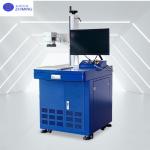
|
Smart Fiber Laser Marking System Serial Codes Logos Traceability |
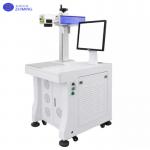
|
Compact Fiber Laser Marking Machine Clean Maintenance Free Marking |
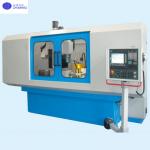
|
CNC Sapphire Surface Grinding Machine Precision Surface Grinder Polisher |
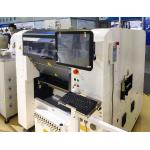
|
Fully Automatic Wafer Thinning Machine Si SiC GaN Ultra-thin Wafer Grinding |

